We all remember those summer holidays when we were eight or nine perhaps, sitting cramped and bored in the back of the clunky family station wagon sandwiched between irritating siblings. The car was always hot, the journey took forever, your dad was busy trying and failing to read maps and road signs simultaneously and everyone was grumpy.

“And then finally as you rounded a bend there it was. A vast swathe of sand and beyond it a sparkling blue sea that seemed to go on forever."

And just like a mariner in the crow’s nest yelling “land-ho!” yours was always the excited small voice in the back of the car shouting “there’s the sea!”. And then, with the sea now firmly in sight and the destination at hand the mood in the car suddenly lifted. You and your siblings ceased hostilities and all eyes were riveted on the beach where you planned to spend every minute of the next few days, or week if you were lucky. And now many years later after you’ve driven for a few hours to a new coastline somewhere and you catch your first glimpse of the sea, there’s still a little of that boyish excitement reminiscent of childhood summer holidays.
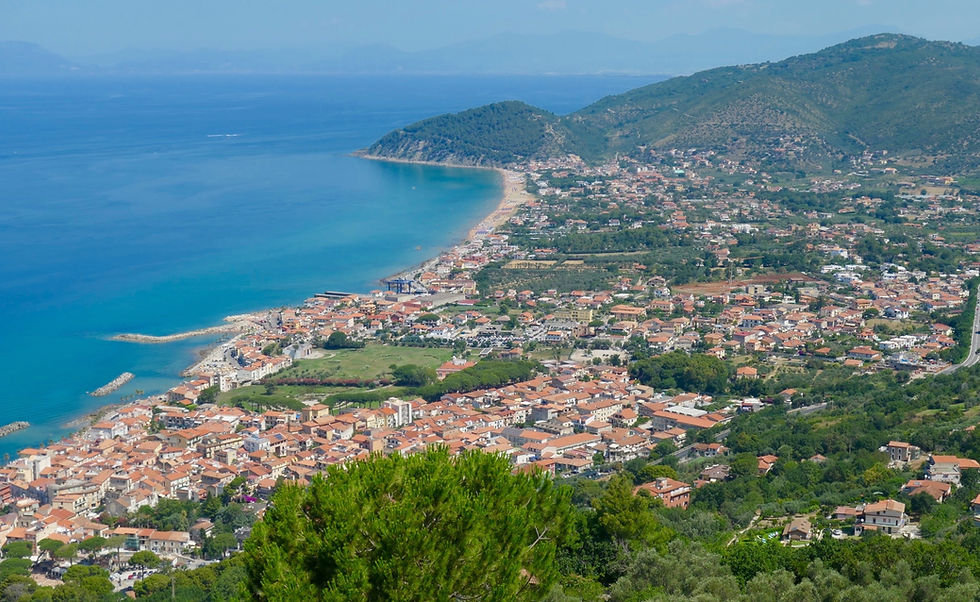
When you see the Cilento beaches and the color of the sea and then feel the softness of the sand and the warmth of the water you’ll wish you were nine years old again. Except now we’re all looking for much more than just a beach.
So let us introduce you to somewhere that has it all: the Cilento (the Italian"ci" is pronounced like "chee" in English), a part of Italy that while not remote is sufficiently off the beaten path to have retained its charm and authenticity and where you will still find holidaying Italians outnumbering foreigners. The Cilento is both a national park as well as one of the more than fifty Unesco World Heritage Sites in Italy.

After two hundred miles and an easy three hour drive south of Rome, bypassing Naples and past the overcrowded Amalfi coast, you reach the beginning of the Cilento at Paestum. But just before that, as you exit the highway at Battipaglia and drive along the 13 mile road towards Paestum and the sea you will pass through the heartland of the world famous and delicious mozzarella di bufala. Your nose will pick up the presence of thousands of buffalo before you even see them, especially as you can only crawl along this road at a paltry 50 kms per hour speed limit.

Mozzarella has been produced in this area for at least eight centuries from a type of Asian water buffalo well suited to the flat marshy area south of Salerno.

How the water buffalo first arrived here is a mystery lost in the mists of time but it has come to define one of the great culinary products of Italy.
Many of the mozzarella producing buffalo farms (or more accurately caseificio) welcome visitors and also produce ricotta, yoghurt, butter, and gelato from the rich sweet milk of these beasts.
As we had been driving for six hours by this time having set out from Lucca that morning we bypassed Paestum itself, choosing to stop there on the way back, and continued on to our first destination, Santa Maria di Castellabate, only another half hour south into the Cilento proper. And what a jewel of a place it turned out to be!

I'm sure it’s true for most experienced travelers, but as soon as we reach the sea somewhere new and drive along the waterfront we can immediately sense how enjoyable the next few days will be. Everything contributes to that first impression, from the layout of the town and how well preserved it is, to the type of shops, bars and restaurants along the seafront and even the type of people either just enjoying themselves on holiday or busy with their daily work. Given that we’re in Italy we also like to see a few fishing boats in the harbor rather than a small fleet of mega yachts because then we’ll know that our seafood dinner will be both fresh and reasonably priced.

Unpretentious and a little old-fashioned in the nicest sense of the word were our first thoughts as we drove along the sea front towards the compact town center. No new high-rise apartment buildings or concrete hotels. In fact we didn’t see anything new at all; this is Campania after all, not Tuscany. Lots of simple family restaurants and quiet bars facing across the street to the sea lined with rocks, but rocks big enough to stretch out on, and interspersed with little sandy beaches every so often.

And then you arrive in the delightful center with its two attractive and very clean beaches surrounded by shops, restaurants and cafes, all quite smart looking but still a far cry from those chic northern seaside resorts frequented by the always too well-dressed milanesi. This is a place where Neapolitan families holiday and that alone imbues it with an atmosphere that is both relaxing and effortlessly authentic. Santa Maria is emphatically not trying to be anything other than what it is and for us it hit all the right notes. And as ever in Italy, when you find yourself anywhere from Naples south, the coffee, the pastries, the gelato and the pizza are among the best to be found in all of Italy.
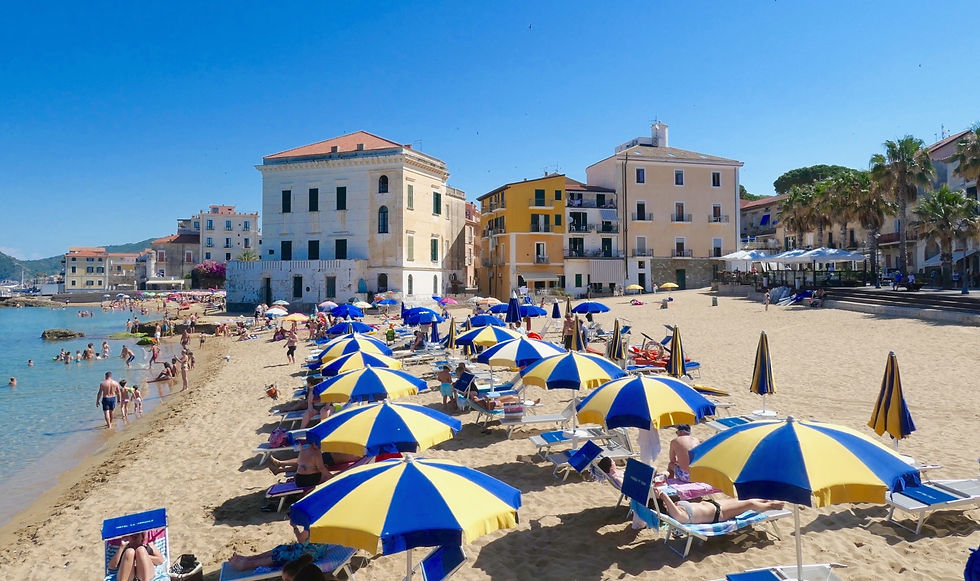
Santa Maria has a few excellent hotels but we chose a bed and breakfast on the top floor of an attractive restored old villa right on the water with its own kitchen and a nice balcony; two actually. We generally prefer an apartment so we can get a take-out for dinner one evening instead of always going to a restaurant and when you’re in a different part of the country an apartment allows you to have your fill of the local street food.
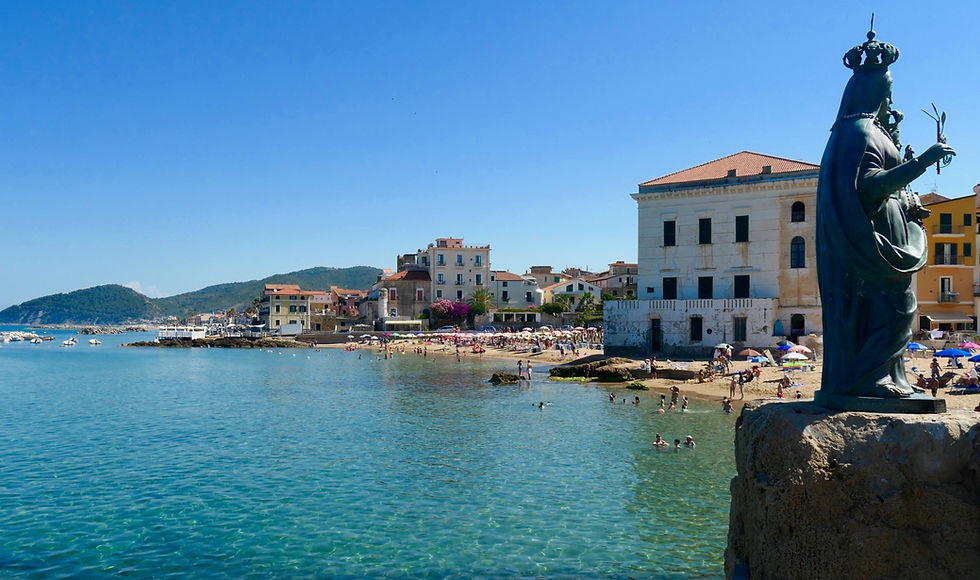
A few steps away we found a place called Lo Sparviero Cuopperia right off the beach where you stand in line to buy classic Neapolitan fried fish in folded paper cones (in cuoppo). Typically small very fresh local fish like smelt, anchovies, squid and shrimp, all deep fried and then served with slices of fresh local lemons and always with zeppoline which are fried balls of bread dough, sometimes with anchovies inside.

Santa Maria also has its share of very good restaurants, many right on the seafront so you can enjoy the sunsets which are stunning here and which coincide neatly in June and July with the typical nine o'clock dinner time in the south. One restaurant that deserves a mention is Osteria 1861. Though not on the seafront it has an attractive outside courtyard and exceptional food as well as very good local wine.

Santa Maria di Castellabate has two siblings close by. The first is San Marco di Castellabate about a mile south which has a marina for yachts and fishing boats as well as more beaches and then directly above Santa Maria is the older town of Castellabate. Unlike many Italian hilltop villages Castellabate is in pristine condition with fabulous views and almost too pretty for its own good in that, while definitely worth a visit and a long lunch, it’s in danger of becoming a little too touristy and in our opinion not a place where you need to stay overnight.
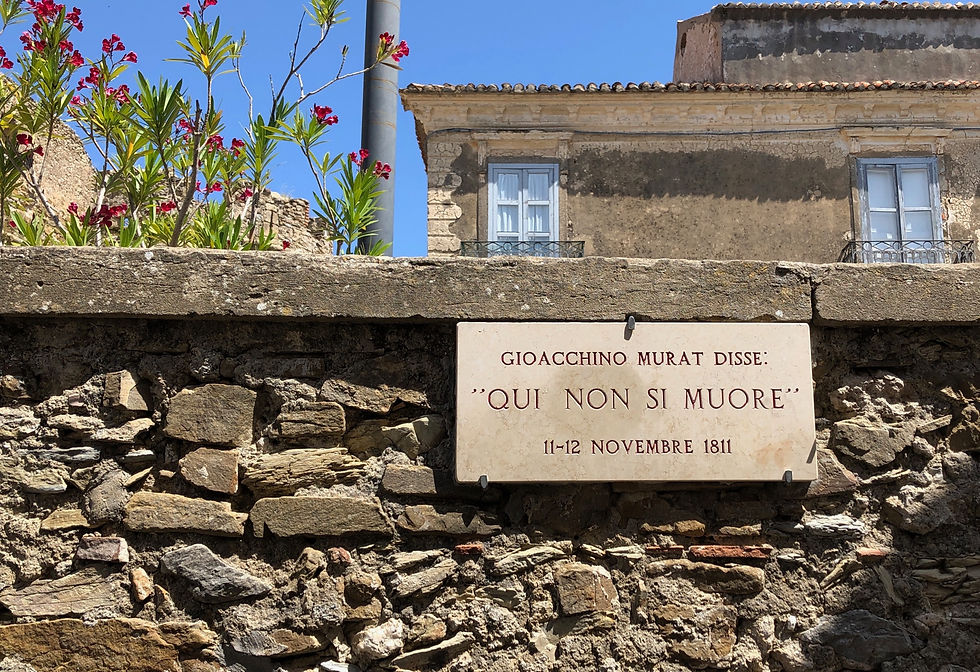
There are some fun things about the place however. It was the setting for the Italian comedy Benvenuti al Sud which makes a joke out of the famous line uttered by Napoleon’s favorite general, Joachim Murat, when he paid a visit to Castellabate while he was king of Naples in 1811: “qui non si muore” (here you don’t die). By this he meant that the climate and culinary traditions of this part of Italy were (and continue to be) conducive to a long healthy life. Murat was shot by firing squad not long afterwards so didn’t live long enough to test that theory.
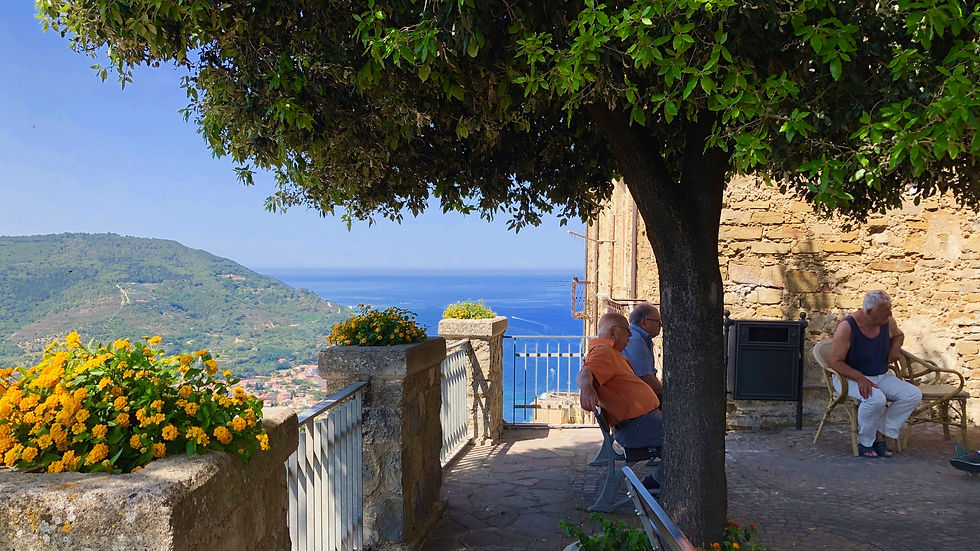
But after reluctantly leaving Santa Maria behind and working your way down the Cilento you arrive at the tiny hamlet of Pioppi where Murat’s casual observation was to be given scientific justification over a century later. It was here that the American physiologist Ancel Keys first researched and popularized the mediterranean diet after moving to Pioppi in the mid 1970s to study the reasons behind the longevity of the local population.
He became a huge believer himself, lived in Pioppi for almost 30 years and died at 101 thereby validating his research in the best possible way. In recent years the evidence has continued to grow and several prominent universities recently descended on the neighboring town of Acciaroli for six months research when it was discovered that an incredible ten percent of the entire population had become centenarians.

Pioppi is too small to warrant an extended stay and after another of those long leisurely Italian lunches that pleasantly fill half the day we continued south to Pisciotta, only a few miles away, passing more Greek ruins at Velia, the Magna Graecia town where the Greek philosopher Zeno lived.

Pisciotta itself is another charming hilltop town perched 600 feet above the sea and while not as deliberately pretty as Castellabate there are clearly more locals here that live and work in town and it has more of a bustle to it. Perhaps this is because it lies on the main Cilento coastal road, which is a little unusual for a hilltop town. The views once again are exceptional and directly below the town there is the Marina di Pisciotta, an active harbor where the daily fish catch is landed.

The center of Pisciotta is quite small and not all of it has been restored so there are some dilapidated bits here and there. It is made up of the typical rabbit warren of narrow passageways opening on to the occasional little piazza, a layout which those of you familiar with Italian hilltop towns will recognize. There are also a couple of good hotels and well-regarded restaurants squeezed in among the alleyways as well as some high-end boutique hotels in the olive covered hills outside town.
South of Pisciotta along a coastline that is steeped in Greek mythology there is a fabulous six mile stretch of wide sandy beaches and clear water, perhaps the best on the Italian mainland and comparable with some of the famous Sardinian beaches.
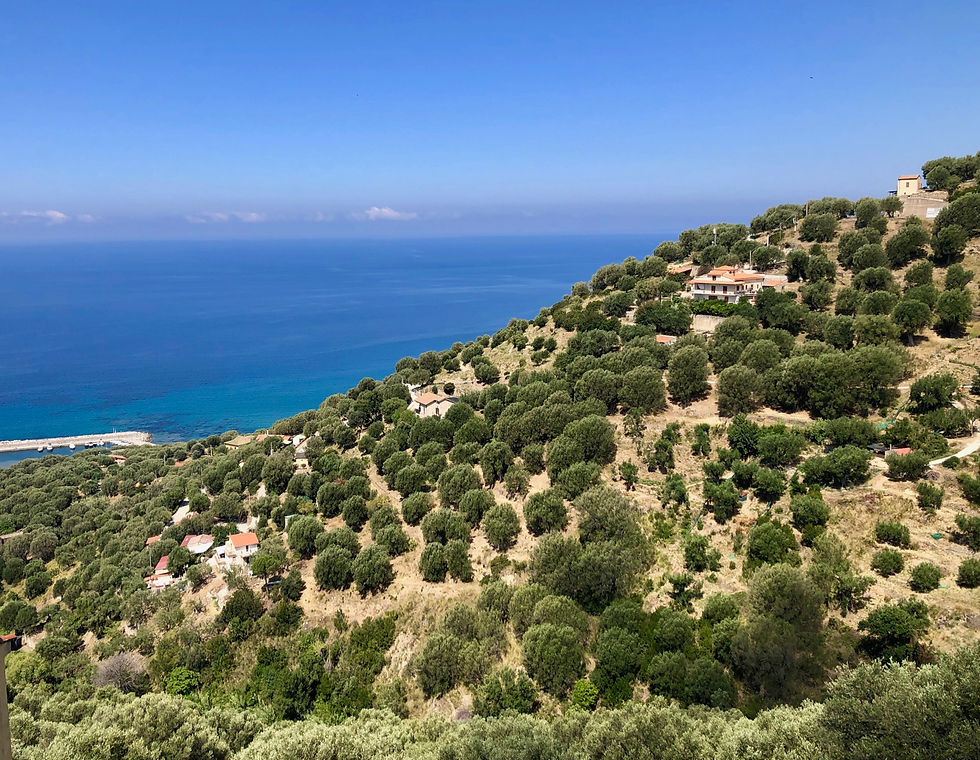
There is virtually no development on the hills behind the beaches until you get to Palinuro as this part of Italy is really quite empty. We spent a whole day on Saline Beach and it was nice to be on a beach for a change where you are surrounded by hills covered with olive trees and native plants rather than an endless line of hotels.
You can reach the beaches in just a few minutes if you’re staying in Pisciotta but the town of Palinuro is perhaps a better and less expensive choice for families with young children who are looking for doorstep access to every beach and water activity you can imagine, all set in an area of natural beauty.
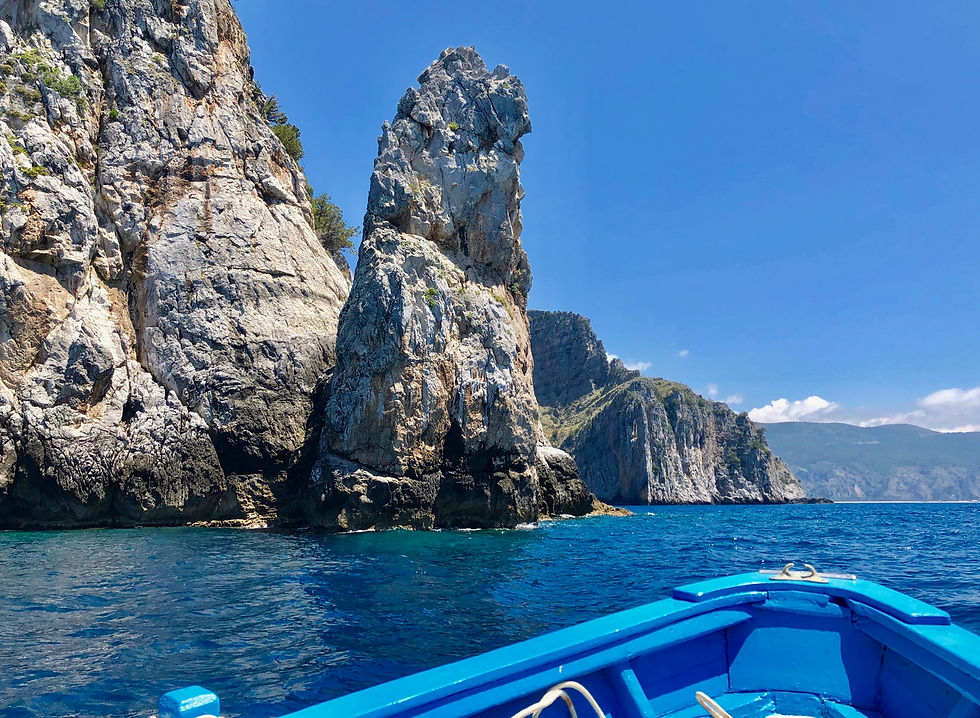
One activity no one should miss if you’ve made the effort to come all the way to the southern part of the Cilento is the boat tour around the Palinuro peninsula. The tour is done in a traditional wooden boat small enough for the skilled guide to squeeze into the various grottoes inside the cliffs, the most famous one being the Grotta Azzurra which has vivid blue water (like the Blue Grotto on Capri but much less hassle) where the sunlight entering the cave is filtered by the water which absorbs the red tones leaving only the very blue ones visible.

It’s a very relaxing excursion for 90 minutes and on a hot day just as you’re starting to think that a swim would be a good idea the guide steers the boat close in to the Spiaggia del Buon Dormire, which is only accessible from the sea, and everyone jumps into the water right off the boat.
The Cilento coast continues on a little further east past Marina di Camerota to the border between Campania and Basilicata but this was as far as we needed to go and now it was time to return north and stay a night in Paestum on the way back.
" The air was delicately scented by the remarkably large and lovely violet. At last we glimpsed the sublime and powerful rows of columns hemming in the horizon, in the midst of a desolate wasteland ". These are the words of a letter to a friend by the English poet Percy Shelley who saw Paestum in February 1819. Not many years before Shelley's visit Paestum had emerged from centuries of neglect and obscurity, hidden by nature and perhaps that and its remoteness are what saved it from being plundered and dismantled.
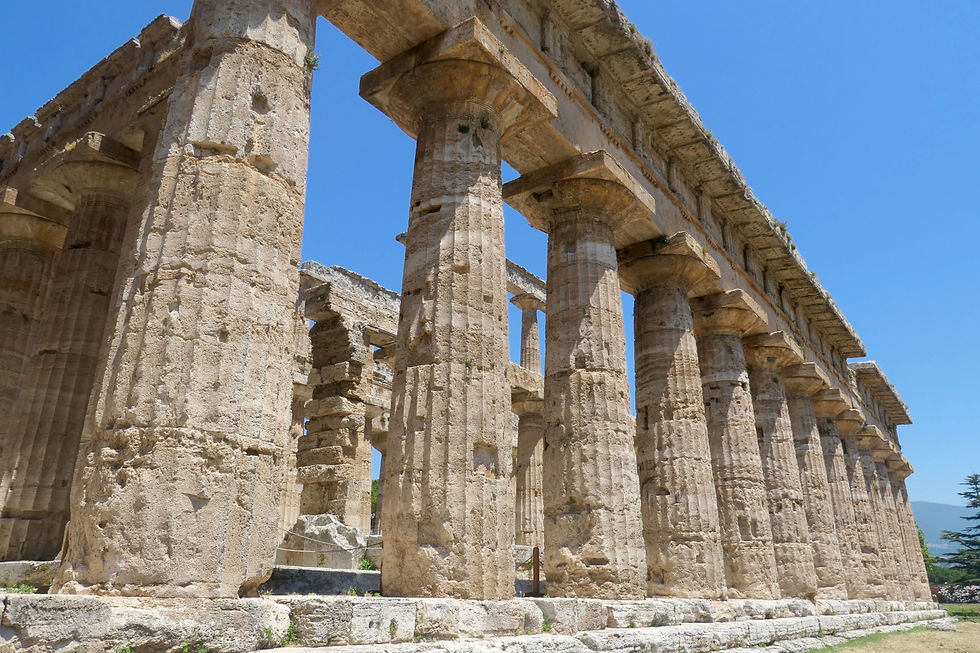
Paestum is now world famous for its marvelous Greek temples and rightly so because there are three of them in exceptionally good condition given they are about 2,500 years old. They are on a large site well away from modern buildings and scattered around them are more recent Roman ruins. You are allowed to wander quite freely over the entire acreage and see everything in an undeveloped and very lovely natural setting and there is also an archeological museum nearby.
You can then return after sunset to see the temples from a distance fully illuminated, which is also a magnificent sight. After a visit to Paestum there is much less need to plan a trip to Agrigento unless you are a real glutton for Greek ruins. In fact these three perfectly preserved Doric temples may be finer than those even in Greece itself.
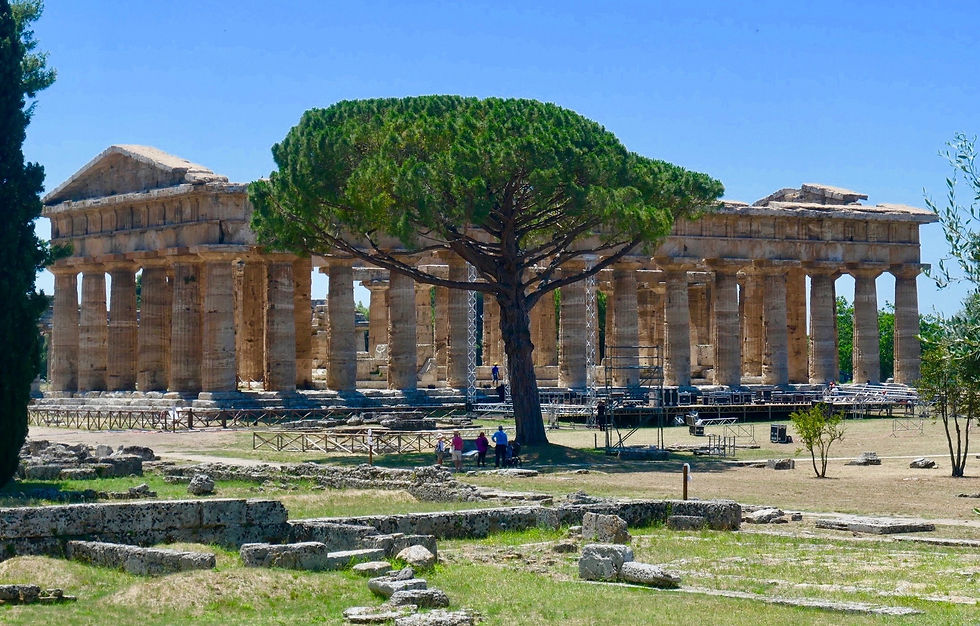
We had booked our hotel in Paestum for one night at short notice based on its proximity to the temples and it turned out to be on a very busy road. Early that evening just when we were beginning to think that we had made a mistake, the police arrived and closed off both ends of the road to traffic and immediately an army of waiters appeared from the buildings along its entire length, most of which we hadn’t even realized were restaurants, and proceeded to cover the road with tables and chairs.
Crowds then magically appeared, picked their favorite spots for dinner and it turned into one long exuberant summer evening that stretched late into the night. All in the shadow of the imposing Roman wall hugging the side of what used to be a road but was now more like a large Italian piazza, the road having completely disappeared under the festive throng.
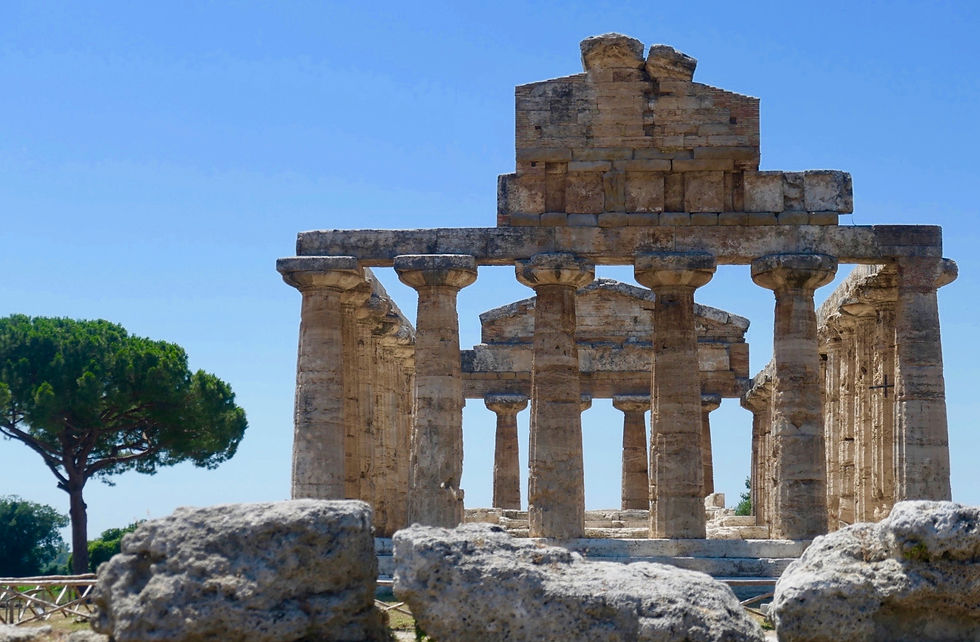
By the next morning the whole street had been cleared and restored to traffic and no trace remained of the convivial dinner scene of the night before, but by then we were leaving for Terracina by way of Monte Cassino, a story for another day.
